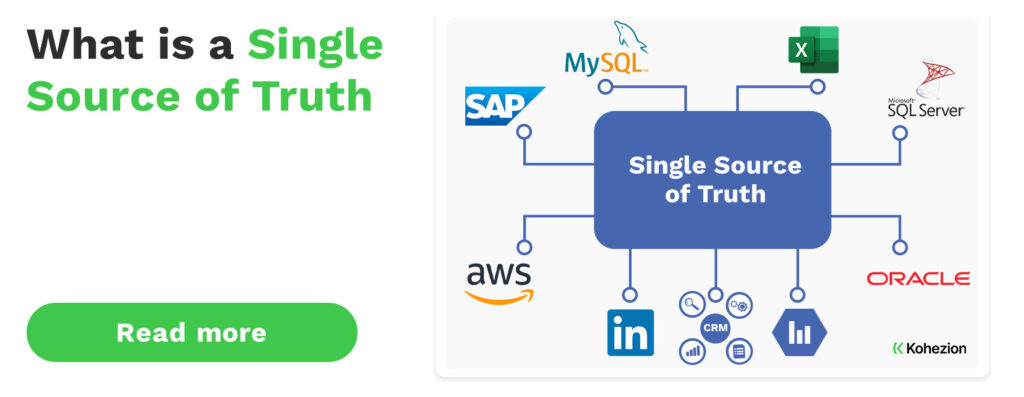What is the System of Record?
System of record is a computer system responsible for maintaining, validating, and providing access to an organization’s or company’s data. This complex system serves as the authoritative source of truth for information.
It’s typically used for reporting, analytics, and compliance purposes. The purpose of this system is to store and manage data in a secure, organized, and reliable way. It is typically made up of multiple databases, which are integrated together with applications and processes.
What makes it different from other types of data systems? It’s the authoritative data source for any piece of information. Bear in mind that it isn’t the same as the source of truth. Read on to find out more about the main differences between them.
What is the Source of Truth?
The source of truth is a single, trusted data source that provides a complete and accurate picture of a data object. This authoritative source of data is used by all employees within an organization/company when making decisions. The goal is to ensure that data is not only reliable and uncorrupted but also in line with compliance requirements.
System of Record vs Source of Truth: Detailed Comparison
Data Source
In the system of record, all the data needed to run a business are captured and stored in this system. This includes customer, sales, product info, inventory levels, and employee records. However, since a system of record is created by software, there may not be an actual person who writes or edits the data.
A source of truth can be used for just about any type of business process or project, so it’s the ultimate source of organizational data. That’s why most companies rely on it (rather than a system of record) in cases where accuracy and consistency are of the greatest importance.
Data Access
What about data access? The main difference is that a system of record requires specific expertise and training to get access. As for a source of truth, it can be used by any employee with access rights. It’s very important to consider the specific business process as well as the level of expertise when accessing the data to choose a more suitable system.
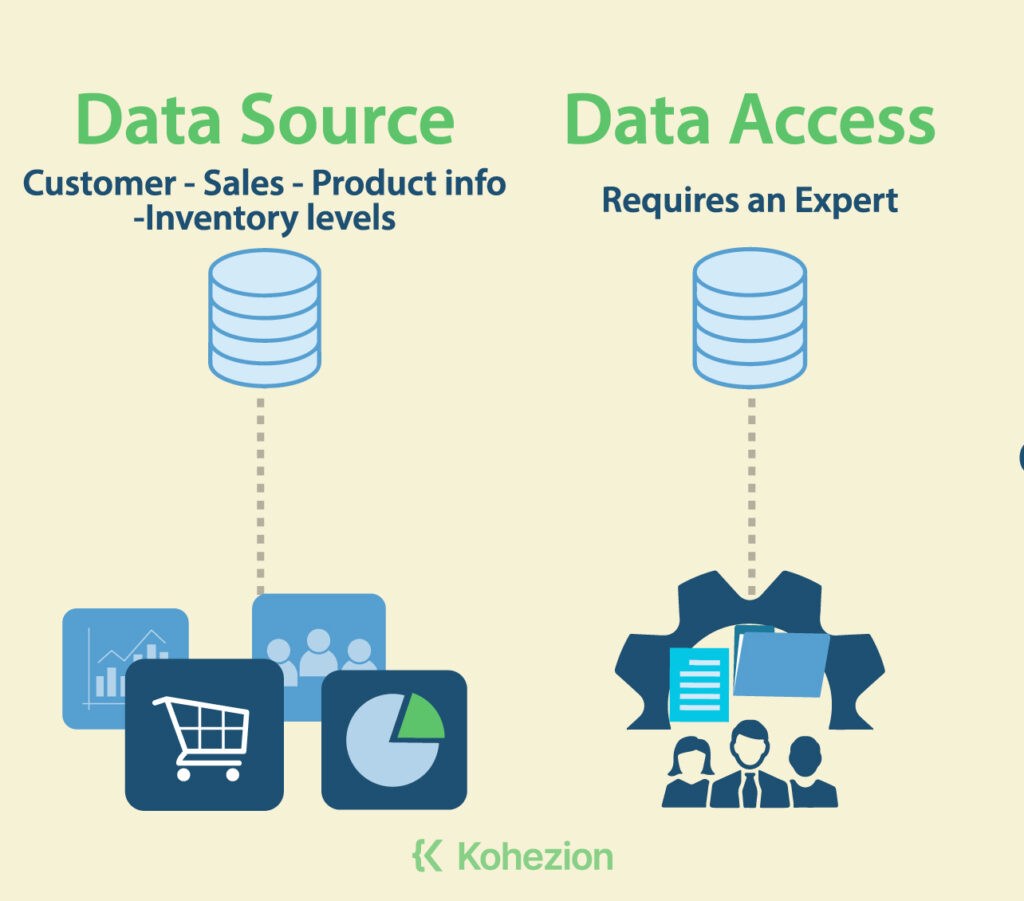
Data Organization
As the ultimate source for storing specific kinds of data, the system of record allows organizations to store all the necessary information about their operations. A source of truth is the complete system that represents the ultimate source of organizational data so that every project stakeholder can use data for its activities when making project decisions.
Data Management
A system of record is meant to house and store all necessary information to run a business. This includes customer and employee records, sales as well as inventory information, etc. In contrast, a source of truth actually represents the official record of a company/organization.
Therefore, both systems have a role in data management, but they are not interchangeable. Although both systems revolve around storing data and are primarily used for reporting and analysis, the level of authority is what makes the difference.
If you’re a manager, be sure to understand the key differences between these systems to figure out which one works better for the particular business processes. It can result in more effective data management.
Product Data
A system of record is considered to be the most accurate and up-to-date source of product data. A source of truth, on the other hand, is intended to provide a centralized view of product information across multiple channels. To manage product data effectively, businesses should use both systems at the same time.
Sales Data
Companies are advised to use both systems when making decisions about their sales strategies. Still, they need to understand their differences regarding sales data.
A system of record actually acts as a customer relationship management (CRM) system. It contains information about customers' contact details, purchase history, as well as other relevant data.
How does a source of truth work in this context? When talking about sales data, it could be a report generated from the CRM system that provides accurate and up-to-date info about sales performance. That’s why it’s often regarded as a sales report.
Data Set
The system of record holds the primary version of a particular data set. How does it work? In a nutshell, it focuses on a specific data set and its ownership. It makes sense, right?
The source of truth comprises numerous systems of records and sources. To provide a comprehensive and accurate perspective, it integrates and harmonizes data from various systems, acting as a central point for reconciling discrepancies.
Data Architecture
With regard to data architecture, the key difference between these two systems is how they are used. Let’s break it down as simply as possible.
- Besides storing data, a system of record makes information available to a specific group of people.
- A source of truth is used for reflecting reality, so every piece of data is available to anyone who needs it at any time.
Both systems are used to store data, generate reports, make decisions, manage data, and identify gaps in processes. What makes the difference is that a source of truth can be used by any employee with access rights, whereas a system of record can only be used by someone with specific expertise.
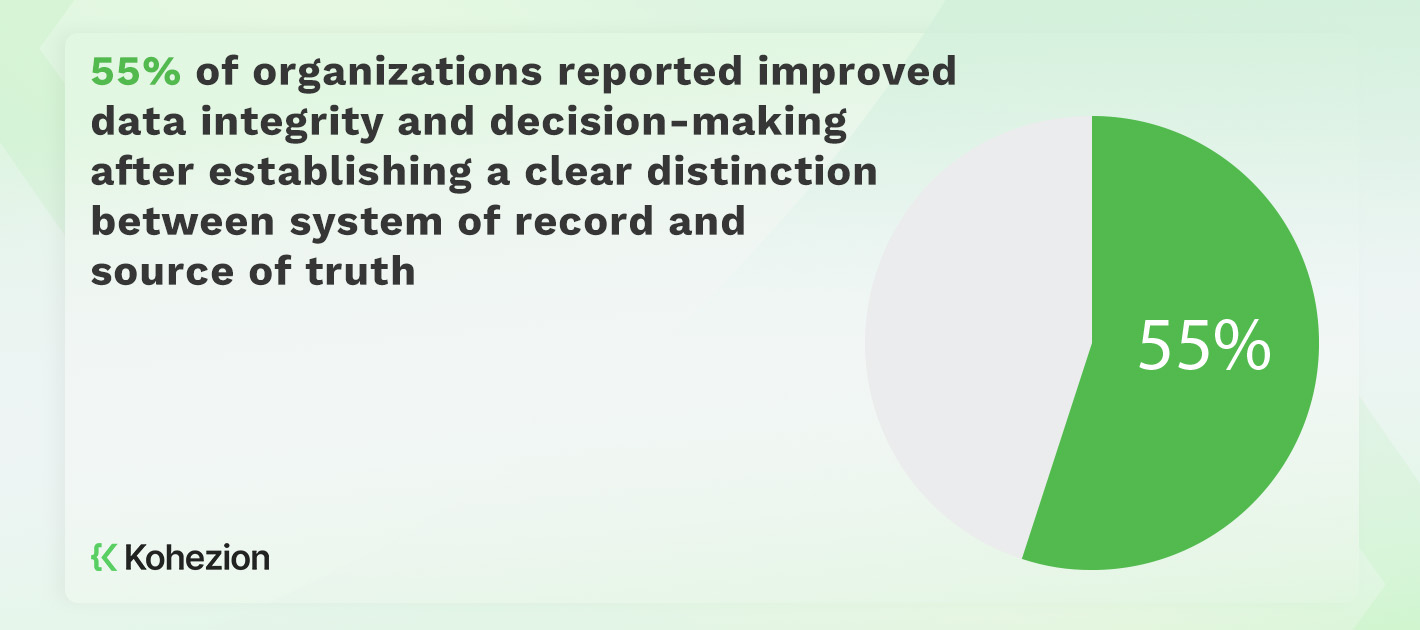
Data Quality
Keep in mind that data quality can become corrupted or inconsistent in both systems. Yes, that happens from time to time. Why does it occur?
- In a system of record, data quality can get compromised if there are errors in the data entry process. Sometimes it occurs when the data is not updated on time.
- In a source of truth, data quality can get compromised in case of multiple sources of data that aren’t reconciled. It may also happen when the data isn’t updated regularly.
Data Integrity
If you run a business, then you know how data integrity is crucial for your organization to ensure the accuracy and reliability of data. Maintaining data integrity is essential for both systems of record and the source of truth. Let’s see how they differ in this regard.
- System of record: This approach is suitable for environments where there’s a single authority over all data consumers, providing that all consumers have similar needs. The integrity and validity of any data set are open to question when there is no traceable connection to a good source. In cases where the integrity of the data is vital, the data element must either be linked to or extracted directly from it.
- Source of truth: It is the go-to source when it comes to accuracy and consistency. That being said, any information a business uses comes from this source. What makes this approach different from a system of record is that it is the authoritative data source. Getting all the data into one place is not important as long as they are available somewhere else. Any updates or changes to the source of truth are accurately reflected in all other systems that use it.
Data Requirements
A system of record can be considered a virtual place where all the necessary information about operations lives or will live in the future. It should be noted that the data is managed and updated automatically through point-of-sale systems and inventory management software. Yes, that’s right, this means it is usually not edited by humans.
A source of truth is regarded as an official record of a company or organization. It is managed and updated by humans. This data is typically used (managed and updated) by employees who specialize in data analysis and customer insights. Who can use it? Any employee with access rights even if he or she has no special skills.
Data Flow
What’s the difference in terms of data flow? The system of record represents the direction of data entry and updates, where data flows into the designated application or database.
As for the source of truth, data flows out from the unified source to be accessed and utilized by various systems and stakeholders. That’s one of the key differences.
Data Infrastructure
As mentioned above, both systems have a role in an enterprise environment. Even so, they are not the same thing when it comes to data infrastructure.
- The system of record represents the technical infrastructure and architecture designed to handle the data set.
- The source of truth encompasses the overall infrastructure and mechanisms put in place to integrate and synchronize data from multiple systems of record.
Data Elements
There are also some differences between the system of record and the source of truth with regard to data elements.
The former is not only the authoritative source for a specific data element or information, but it’s also the most accurate and up-to-date source of information that can be trusted. The latter provides a complete picture of the information.
Take a look at the table below to get a quick insight into some key differences between these two concepts:
| System of Record | Source of Truth |
| Typically associated with an application or database | Typically associated with the data itself |
| Provides the accurate and up-to-date info | Provides a complete picture of the information |
| Can be complex and difficult to maintain | Can help identify inconsistencies or opportunities for improvement |
| Examples: HR system for employee salary, CRM system for customer information | Examples: A single database or data warehouse that contains all relevant information for a specific project or process |
Data Challenges
A system of record only provides what is approved and is unlikely to be entirely accurate. As opposed to that, a source of truth provides a list of what exists; however, it may be limited in scope and missing critical information.
Relying on one over the other can lead to data inaccuracies and confusion. This eventually results in data challenges. For instance, relying solely on the system of record can miss ephemeral systems. If you rely completely on the source of truth, you’re likely to miss critical information about resources. So, it’s best to combine them.
Data Silos
One of the last things that organizations want is data silos. When an organization uses multiple systems of record and sources of truth, data silos can be created. This can have a negative impact on business operations.
When do data silos occur? It usually happens when data is not consistently and accurately managed across all systems and sources. For instance, if an organization has one system of record for customer data and another for sales data, it can be difficult to connect them and get a complete picture of a customer's interactions with the company.
To avoid data silos, organizations should maintain a single source of truth for all data. This involves ensuring that all systems and sources of truth are consistently and accurately managed and that data is stored in one location.
It’s easier said than done, though. This can be a challenging task. By having a single source of truth, organizations can ensure that all stakeholders are using the same data. This is the way to go!
Data Objects
Last but not least, data objects are managed differently in the system of record and the source of truth.
In the first case, data objects are stored in a centralized location. It serves as the authoritative source of data. This includes all necessary information about the organization's operations like customer information, sales data, inventory levels, employee records, etc.
As for the source of truth, data objects are managed differently because they are typically more limited in scope. It’s done by integrating, consolidating, and harmonizing them from various systems into a unified view.
We'll buid your first application for you. At no extra cost.
Let us build your first business application for free. Go from an idea to an application in under 2 weeks.

System of Record VS Source of Truth: Top 10 Differences
1. A system of record is a database that’s used primarily for internal purposes
If you need a database for internal purposes, a system of record is what you’re looking for. This computer system is designed to store and manage data in a secure and organized manner. It is used for reporting, analytics, and compliance purposes.
As such, it provides benefits like accurate and up-to-date data, improved decision-making, and secure data storage. Some examples include an accounting system owning customer or employee account data.
2. A source of truth is an authoritative database that’s used to verify other databases
Being a trusted and authoritative database, a source of truth serves as the single reference for reliable and accurate information within an organization. Unlike a system of record, the source of truth makes sure everyone within the organization is using the same information to make decisions and drive business outcomes.
In addition to verifying other databases and preventing data loss or theft, it also plays a role in improving accountability and reducing costs by eliminating duplicate work. In order to create a source of truth, organizations need reliable, uncorrupted data from SORs, along with buy-in from company leaders.
3. A system of record is typically more accurate and more up-to-date than a source of truth
Due to the fact that a system of record is typically complex and houses a large volume of data, it is often difficult to maintain. Nevertheless, it is usually more accurate and up-to-date than a source of truth.
Sometimes a system of record can become outdated or inaccurate, though. This happens when proper data management processes are not in place. Nothing is perfect.
In contrast, a source of truth ensures that there is only one authoritative source for data. That can considerably reduce the risk of errors and inconsistencies.
4. A system of record is often less accessible than a source of truth
Maybe you’re wondering why a system of record is less accessible than a source of truth. That’s because it is a structured database that captures and stores all the data required to run a business. As you may assume, this means that the data can only be accessed through the system's interface.
Considering that a source of truth is the official record of a company/organization, it comes as no surprise this system can be accessed more easily. The difference in accessibility can have implications for data analysis.
5. A system of record is often more difficult to update than a source of truth
Even though a system of record is the most reliable and accurate source of data, it can be pretty difficult for organizations to update it and most of them find it complicated compared to updating and maintaining a source of truth. Why?
That’s because a system of record consists of a huge amount of complex data that are mission-critical for businesses. They often have a hard time maintaining it due to the fact that this process requires constant attention to make sure everything is up-to-date and accurate.
On the contrary, it’s quite straightforward to update to a source of truth because it reflects reality. What does it mean? Any changes or additions are immediately reflected without any extra work from anyone else.
6. A system of record operates independently and can function autonomously within its specific domain
It is worth mentioning that a system of record usually relies on its own data sources, processes, and workflows. Conversely, it is dependent on the integration and synchronization of data from multiple systems of record.
7. A source of truth is generally less complex than a system of record
Generally speaking, a system of record is more complex than a source of truth. It comes as no surprise considering how much data is housed in it. Yes, we’re talking about the vast amount of data that can come from multiple sources like customer information, sales data, and employee records, just to mention a few.
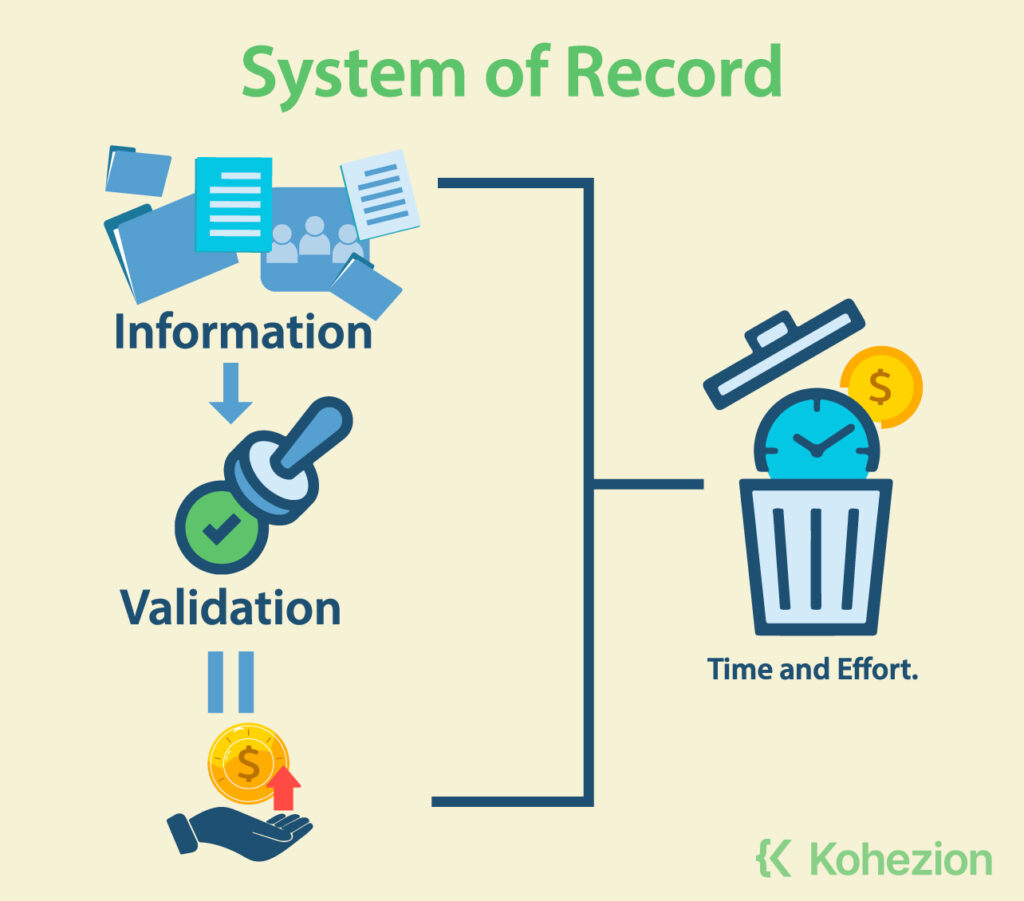
Additionally, a system of record requires data validation to ensure accuracy and consistency. This can be a time-consuming process. For example, if an organization has multiple systems that capture customer data, those systems may have different data formats, leading to inconsistencies.
To ensure that the data is accurate and consistent, the system of record must validate the data and reconcile any differences. It takes a lot of time and effort.
-
A system of record is often more costly than a source of truth
Are you looking for a less expensive option? If so, remember that a system of record would not be a cost-effective choice because it’s costlier than a source of truth. This should not catch you by surprise given the complexity and volume of data managed.
Keep in mind that building and maintaining a system of record requires significant investment in hardware, software, and personnel. For instance, an enterprise-level system of record may require dedicated servers, redundant backups, and specialized IT staff to manage the system.
This is necessary to ensure the accuracy, reliability, and security of the data. In contrast, a source of truth is typically (it’s not always the case) more straightforward, which makes it more affordable to implement. In most cases, it only requires a single database or spreadsheet and basic access controls.
Therefore, a system of record is often not suitable for small businesses when it comes to cost-effectiveness. This is particularly true for businesses with limited resources. The cost shouldn’t be the only factor to consider, though. When making an investment decision and choosing a system, businesses should also take into account factors like the level of security and the available resources.
9. A system of record is often less important than a source of truth for organizations when making business decisions
Without any doubt, a system of record is a valuable tool for storing and sharing data. Nonetheless, most organizations find a source of truth more important for making decisions. Why is a system of record less useful in some cases?
Sometimes it falls short when it comes to reflecting reality, as it may not be the authoritative source of information. For instance, if a system of record is used as the only source of information for decision-making, it may not provide the most reliable information.
That’s why many companies turn to a source of truth when decisions should be made quickly and accurately. No need for additional steps or verification. As the most authoritative source of information in an organization, it is validated and reconciled with other data sources to make sure every piece of information is accurate.
10. A system of record typically has its own data governance policies and procedures
Do you know that every system of record has its own data governance policies and procedures that are specific to that particular system? A system of record you use may have controls and rules defined within the boundaries of its own data domain.
What about a source of truth? In contrast, it incorporates overarching data governance principles that govern data management practices across multiple systems. In addition to uniformity, this ensures adherence to data standards.
List of examples of a system of record
The three most common examples of a system of record are as follows:
| Examples of a system of record |
| Mission-critical business data |
| Customer Data |
| Business Processes |
1. Mission-critical business data
The first example is mission-critical business data. What’s that? It refers to the data that is essential for the smooth functioning of a company’s most important business processes. This data is highly sensitive and must be managed and protected with utmost care.
A system of record is a central repository that serves as the single source of truth for this data. Here are a few examples of commonly used systems of record:
- Enterprise Service Bus: A logical store maintained via message queues using the Publisher/Subscriber (PubSub) approach.
- Apache Kafka: An open-source stream-processing software.
- Master Data Management (MDM): A method/model that enables an enterprise to link all critical data to one ‘master’ file.
Aside from helping organizations eliminate duplicate data entries and provide decision-makers with accurate data, these systems can dramatically improve data intelligence capabilities while keeping the data secure at the same time.
2. Customer Data
As you may already know, customer data refers to the information that a business has about its customers. However, you may not know that a system of record for a business typically includes a customer relationship management (CRM) system.
Here are examples of customer data that can be included in a system of record:
- Contact information ‒ names, addresses, and phone numbers
- Purchase history ‒ it includes past orders and transaction details
- Preferences and behavior ‒ product interests, buying habits, marketing interactions, etc.
3. Business Processes
Essentially, a system of record is a software solution used to manage a company’s core business processes. Listed below are examples of business processes that can act as a system of record:
- Production
- Inventory
- Finance
- Sales
- Customer service
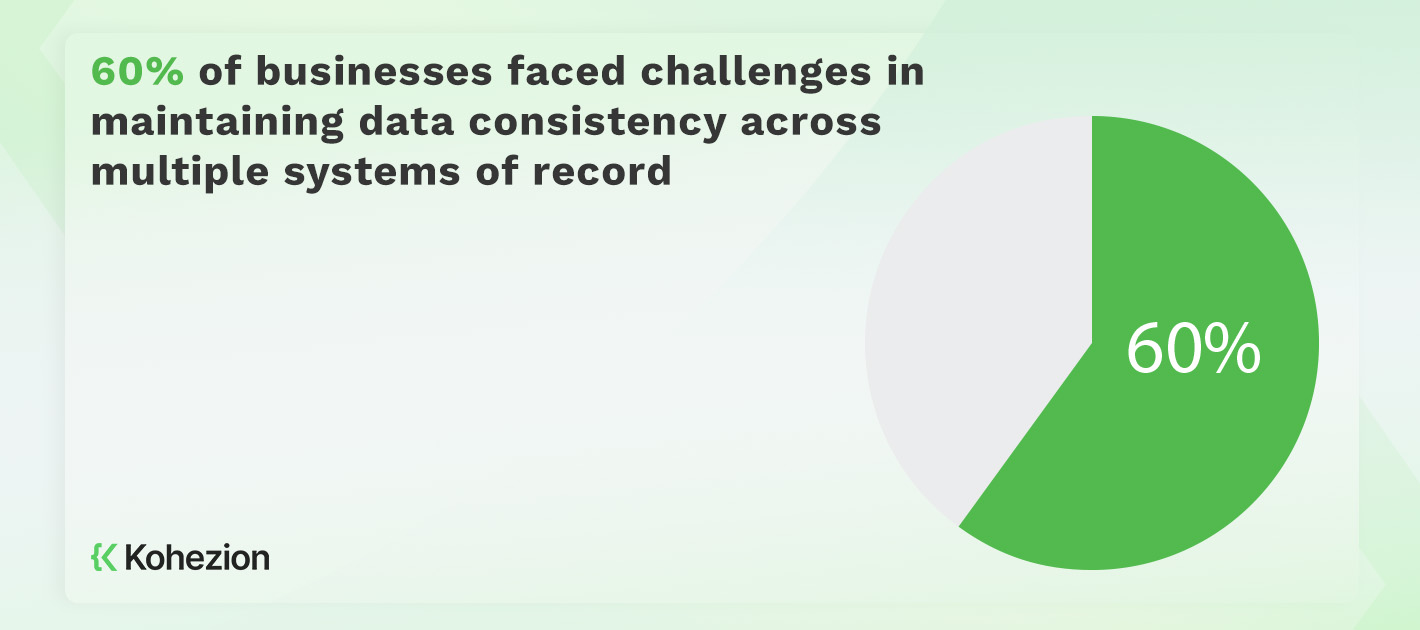
What Types of Software Can Serve As a System of Record?
The following are types of software that are commonly used by companies as a system of record:
- Databases
- Enterprise-level applications
- Customer Relationship Management (CRM) systems
- Accounting systems
- Warehouse environment
- Systems for project management
- SSOT (System of Truth)
- Data warehouses
- Cross-systems
- SQL Server Analysis Services (SSAS)
Here are more facts about each of these types of software to help you choose the ones that work best for you.
1. Databases
As it turned out, most companies use databases as systems of record. That’s because they are designed to store and manage large amounts of structured data. Here are some common examples of databases that can serve as systems of record:
- Relational databases
- NoSQL databases
- Data warehouses, and
- Data lakes
When talking about benefits, databases offer features such as data integrity, security, and scalability. This makes them suitable for this role. For instance, Salesforce is a cloud-based CRM system that serves as a system of record for customer data.
Despite their amazing benefits, databases have some limitations as well. In addition to high costs, there’s the need for skilled personnel to manage databases.
2. Enterprise-level applications
The following are enterprise-level applications that can serve as a system of record:
- Enterprise Resource Planning (ERP) ‒ A solution used to manage business processes like production, inventory, finance, sales, and customer service. It can do a great job of storing, tracking, and analyzing data related to those processes.
- Cloud Data Warehouses ‒ A storage system that aggregates data from various sources, allowing for efficient retrieval and analysis. As more and more companies shift towards a data-driven structure, it’s becoming a favored system of record.
- Master Data Management (MDM) ‒ This model is used for managing an organization's critical data. MDM allows you to manage data across multiple systems and applications in an efficient way.
- Apache Kafka ‒ It is an open-source stream-processing software that can be used as a logical store maintained via message queues using the Publisher/Subscriber (PubSub) approach. This makes it suitable for real-time data streams.
As you can see, each of these enterprise-level applications has unique features that make them suitable for companies looking for a system of record.
3. Customer Relationship Management (CRM) systems
Have you ever used a Customer Relationship Management (CRM) system? It can serve as a system of record by housing customer data (like contact info, purchase history, and buyers’ preferences and behaviors).
This data provides retailers with a 360-degree view of their customers, helping them personalize the customer experience and improve customer loyalty. What makes CRM systems popular is that they are easy to use and built. This is especially true for managing the sales and customer relationship process.
There are some limitations and drawbacks, though. CRM systems are not well-suited to handle the complexity and volume of data typically found in a data warehouse. They are opinionated and inflexible as well. Their structure is locked up, which makes data management and access challenging.
4. Accounting systems
If you run a business, you have probably used different accounting systems. Accounting software can serve as a system of record for financial information. Thus, it can serve as a system of record.
Looking for some good examples? QuickBooks is a popular example of this type of software. It allows businesses to track expenses, create invoices, and manage payroll. Other types of accounting software that can function as a system of record include:
- General ledger
- Accounts receivable, and
- Accounts payable
Each of these software solutions helps businesses improve efficiency and make better strategic decisions by providing a complete and accurate picture of their financial position.
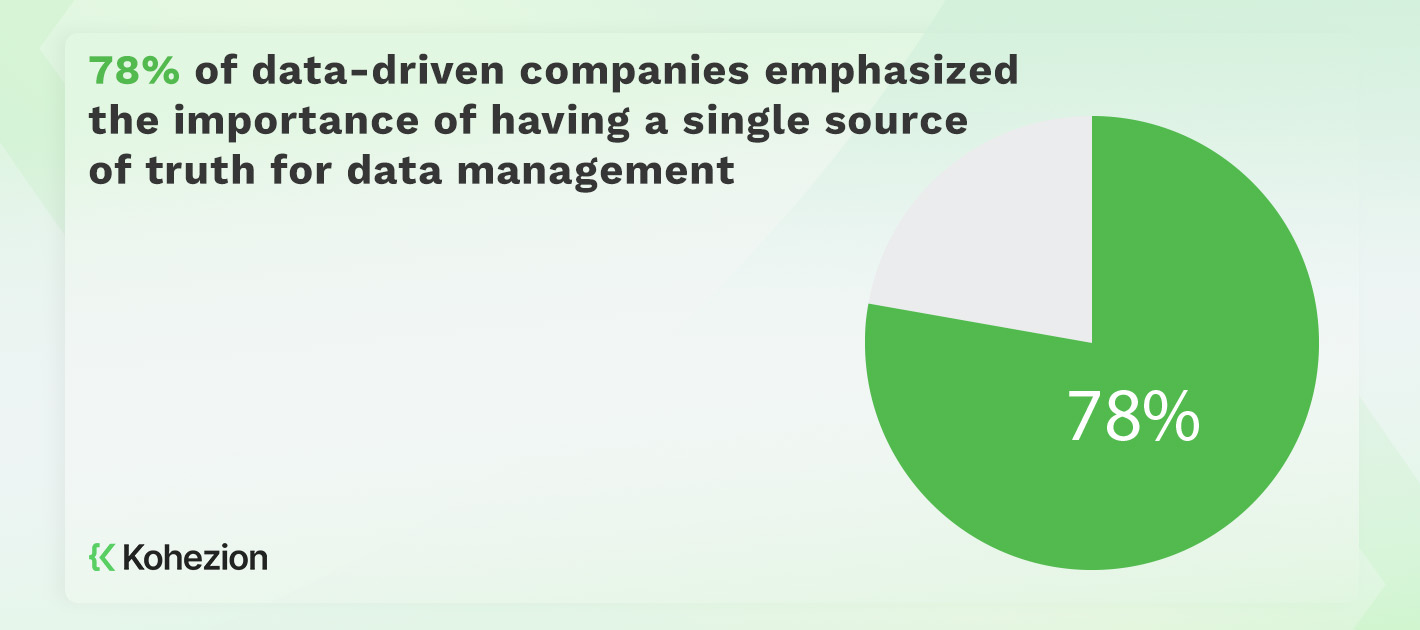
5. Warehouse environment
It’s worth noting that there are several types of software that can serve as a system of record in a data warehouse environment. These include data warehouses such as:
- Snowflake
- Google BigQuery, and
- Amazon Redshift
Additionally, there are modern data infrastructure tools like dbt that allow for easy transformation of data once loaded into the warehouse.
There is still room for improvement when it comes to CRM systems. They should be better suited for handling a great deal of data in a warehouse environment.
6. Systems for project management
As mentioned earlier, a system of record is a centralized location where all project-related data is stored and managed. There are different types of software that can serve as a system of record in project management, including:
- Project management software, such as Wrike, is a popular choice as it allows for real-time collaboration, automated workflows, and customizable reporting tools. Yet, it requires a learning curve for team members who are not familiar with the software.
- Professional services automation (PSA) software is another choice to consider. It is specifically designed for service-based businesses. Nevertheless, it may not be suitable for all types of projects and may be too complex for small teams.
- Enterprise resource planning (ERP) software can be the best choice for those looking for a comprehensive software solution that integrates a variety of business processes, including project management. ERP is not a cost-effective solution, though. It may be too expensive for small to medium-sized businesses.
Note that each of these solutions has its own advantages and drawbacks. With that being said, be sure to carefully evaluate each option before choosing a type of software to be used as a system of record in project management. Your choice will depend largely on your budget as well as the specific needs of the project and organization.
7. SSOT (Single Source of Truth)
What does SSOT stand for? A Single Source of Truth is a system that aggregates data from multiple sources within an organization into a single reference point. It makes sure everyone in the organization is operating off of the same data, which eliminates conflicting data and provides a complete picture of the data object.
Please note that an SSOT is not a system, tool, or strategy. It is actually a state of being for a company’s data. Some examples of software that can be used as an SSOT include Salesforce and Google.
8. Data warehouses
If you’ve ever used a data warehouse, then you know it serves as a central repository for storing and managing data from a wide range of sources in a structured format. This can make it easier for businesses to run queries and extract insights.
Cloud-based data warehouses like Snowflake, Google BigQuery, and Amazon Redshift allow businesses to store and process large amounts of data. The data warehouse contains both current and historical data, which makes it a valuable system of record for businesses.

Apart from making sure every piece of data is consistent and accurate across different departments, data warehouses offer some fantastic benefits like scalability, flexibility, and cost-effectiveness. Because of that, they grow in popularity around the world.
9. Cross-Systems
Sometimes cross-systems can serve as a system of record. When and where? In some cases, organizations may have multiple systems that capture and maintain different aspects of their operations. These systems might include CRM systems, ERP systems, supply chain management systems, and more.
In such scenarios, cross-systems can be implemented to establish a unified view of data across multiple systems. This integration can enable data synchronization, sharing, and consistency between different systems. Unlike individual systems that only serve specific purposes, the cross-systems approach can provide a comprehensive view of information.
That sounds great, right? Though, keep in mind that the design and implementation of a cross-systems solution require careful planning, data governance, and considerations for data quality, security, and privacy.
10. SQL Server Analysis Services (SSAS)
Perhaps you’re not aware that SSAS can also serve as a system of record by providing a centralized and consistent view of data across an organization. For the best results, this solution should be used in conjunction with other data management tools like data warehouses or data lakes. This way it can fully support an organization’s data needs.
SSAS allows for the creation of multidimensional models that can be used to perform complex analysis and reporting on large datasets. Besides, it offers features such as data mining, predictive analytics, and data visualization. Another benefit is that data can be easily manipulated by end-users with SSAS through Excel, Power BI, and other reporting tools.
Unfortunately, there are some limitations to using SSAS as a system of record. One of the main drawbacks is that it isn’t designed for real-time analysis, so data may not always be up-to-date. Also, it may not be suitable for handling unstructured or semi-structured data. Consider these facts before starting to use SSAS as a system of record.
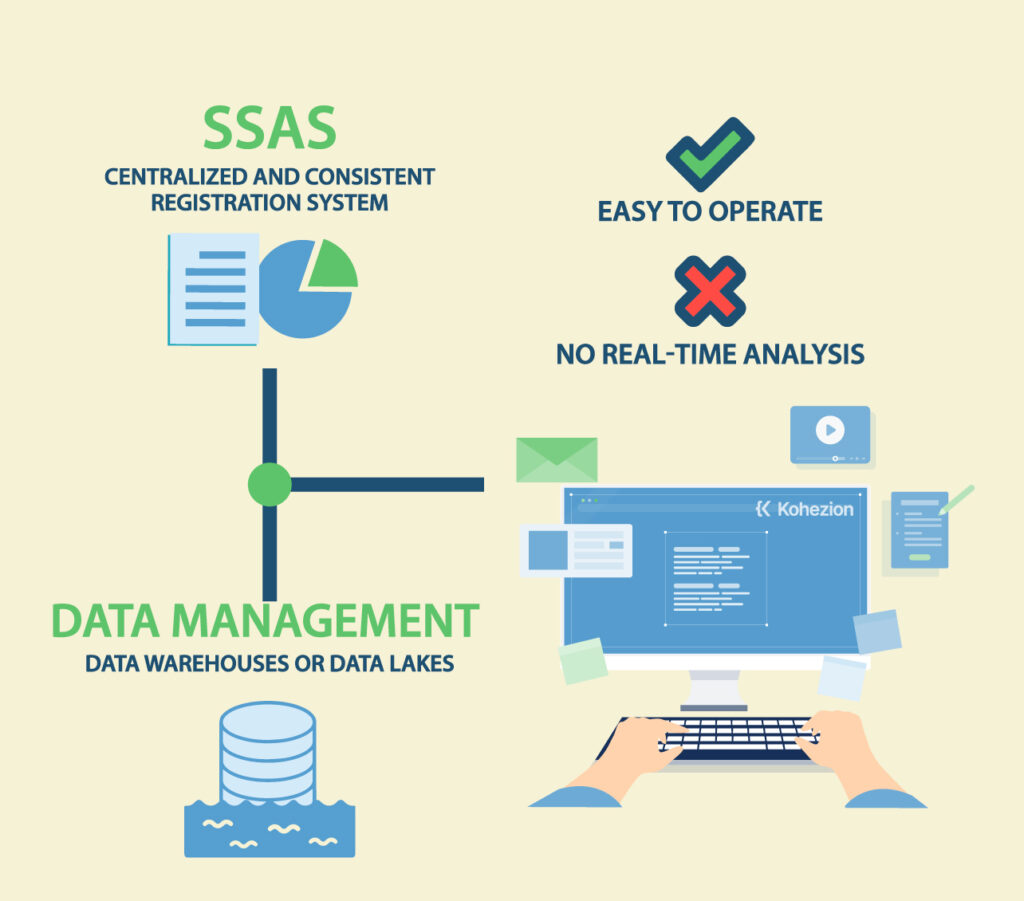
Start building with a free account
Frequently Asked Questions
A system of record can be defined as a computer system that maintains, validates, and provides access to an organization’s data. Moreover, it is the official source of truth for a company’s data.
As such, a system of record is made up of multiple databases and apps that are integrated together. It captures and stores all the data required to run the business, including customer, sales, and product information. Plus, it stores inventory levels and employee records.
A source of truth is usually defined as a unified and reliable data source that everyone in an organization/company can use when he or she is making informed decisions. It’s primarily intended to eliminate ambiguity and confusion in such a way that everyone can rely on the same data.
In essence, a source of truth is the authoritative source of data. So, it should be constructed by excluding random data, accounting for all required information, combining relevant data, and ensuring compliance.
Despite the fact that both systems are utilized to store data, they differ in their approach. It’s vital to distinguish between these two concepts since the accuracy and consistency of data can affect business decisions and operations as well.
A System of Record (SoR) is meant to capture and store every piece of information that’s needed to run the business, whilst a Source of Truth (SoT) represents a more specific and accurate representation of the official records.
Just about everything that is required to run a business. For example, it includes but is not limited to customer, sales, and product information, as well as inventory levels and employee records.
- Customer information typically includes personal details like name, address, and contact information. Besides that, it also includes purchase history and any interactions with customer support.
- Sales data includes info about transactions like date, time, and payment method.
- Product information includes details about the products or services sold, such as price, quantity, and specifications.
- Inventory levels include information about the availability of products and their locations as well.
- Employee records include personal information like name and contact details, as well as employment history, performance evaluations, and payroll information.
In a SOR, customer data is managed as a reliable, consistent, and authoritative source that contains accurate and up-to-date data. It actually functions as a reference data source for a specific data element, thereby protecting that information from inconsistencies that can creep in when data gets handled and processed by other people in the company.
This model offers a lot of great advantages to businesses (both small and big ones). Adopting a single source of truth in your organization can provide benefits like:
- Improved efficiency and better results
- Fewer costly errors and clearer communication across departments
- Elimination of ambiguity and confusion for workers
- Prevention of data loss or theft
- Improved accountability and transparency
- Reduction of costs
- Less confusion and fewer conflicts
- Better tracking of financials and sales trends
Within just about any organization, a Source of Truth (SoT) can dramatically improve data quality. You may wonder how. This model makes sure all stakeholders have access to the same reliable and updated data, thereby reducing the likelihood of costly errors and promoting clear communication across departments.
No data silos and black boxes, which can lead to confusion, ambiguity, and potentially inaccurate decisions. Furthermore, a SoT enables business leaders to make data-driven decisions based on the data from the business as a whole. This is another good reason to consider implementing this powerful model.
Many organizations struggle with managing data between SoRecord and SoT. Dealing with data inconsistencies is certainly one of the most common challenges they face. It arises when multiple information systems disagree about the same piece of information.
Another challenge is duplication of data, which can occur when data is stored in multiple systems, leading to confusion and errors. Besides, manual data reconciliation is sometimes required to ensure that the data in both systems is accurate and up-to-date.
Luckily, organizations can successfully overcome these issues. They need to establish clear guidelines for data management besides reviewing and reconciling data across all systems on a regular basis. It’s worth the effort.
When it comes to a System of Record, some examples of data architectures that support this model include Enterprise Service Bus, Apache Kafka, as well as Master Data Management.
As for a Source of Truth, the supporting data architectures come down to creating a system of record - it’s a central location for storing and sharing information whether it’s an internal or external service. Alternatively, it’s possible to create a source of truth by collecting data from users and storing information under different categories/fields.
To maximize efficiency, Systems of Record and Sources of Truth should be integrated by establishing robust data synchronization mechanisms. This can also be achieved by ensuring real-time updates between them. It can minimize data discrepancies and reduce the need for manual reconciliation efforts, which eventually results in improved efficiency.
